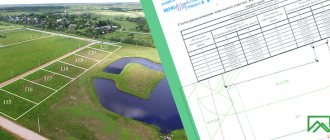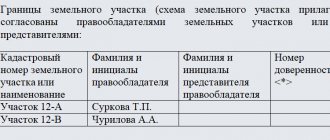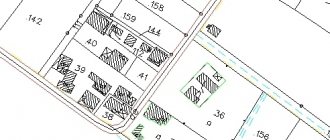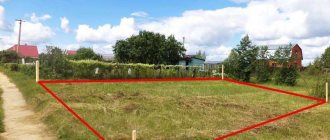Purpose concept
All existing land is divided into categories according to the state land use strategy. During the assessment, the quality of land, its fertility, the presence of vegetation, and soil composition are identified and recorded. At the same time, some territories are under state protection because they are valuable for science and ecology.
Thus, if the land belongs to the category established by the state, the regime of exploitation prescribed by law must be observed. The concept of the category of land, as well as their intended purpose, is identical, therefore both designations are used. To combine the main categories of land use, a special classifier was created.
Land categories
The Land Code of the Russian Federation establishes 7 categorical groups of lands, the main criterion of which is possible activity. Among them are:
- settlements (intended for the formation of settlements);
- agricultural plots;
- special - energy and industrial facilities are usually built on them, communications are carried out and measures are organized for
- ensuring state security;
- natural areas protected by authorities;
- forest lands;
- water fund;
- spare territories.
For development, plots are selected that fall under the category “settled areas.”
The latter category combines land unclaimed by citizens and legal entities. That is, if necessary, they can be used for all needs, and are usually not transferred to civilians. Some categories need to be considered in more detail, since not everything is so simple with them.
Lands of settlements
This category of sites was created for human habitation and placement of the corresponding infrastructure. It has certain boundaries that distinguish it from other lands. Thus, on such lands there may be multi-storey buildings or individual residential buildings, recreational areas used for recreation and tourism, as well as sports activities.
Industrial buildings and administrative facilities, public utility structures and institutions involved in supplying the population, both food and other, are also intended to be located in such areas. Also, the purpose of such lands can be:
- placement of power supply facilities;
- formation of transport infrastructure elements;
- carrying out communication connections, including communication facilities;
- opening, development of private household plots, etc.
The settlement is distinguished by the presence of a transport interchange, communications and power supply.
VRI does not in any way affect the possible forms of ownership, because in areas that require permanent residence of people, federal, private and municipal facilities may coexist. Individual buildings on land do not classify the entire territory as a residential area. It follows from this that even if there are houses and industrial premises on it (in remote enterprises, in forest areas and on farms), they cannot be considered part of a city or town until a decision is made to include the corresponding area in such a territory.
Agricultural land
The range of application is limited only to agricultural work, while the lands themselves must be located outside populated areas. Their main function is the production of agricultural products and the provision of activities that are necessary for this.
In total, the law establishes two subcategories: agricultural and non-agricultural land, and, despite the designated division, they all ensure the normal conduct of the corresponding production.
Agricultural land is located outside populated areas and is used only for its intended purpose.
Agricultural plots include those intended for agricultural activities or livestock raising. These are arable lands, as well as hayfields, pastures for livestock, areas with trees to protect crops from the wind and some other lands. Lands that have undergone the reclamation procedure are considered special. After all, in order for them to obtain the required properties, a number of measures were taken regarding drainage, restoration of fertility and other factors.
Non-agricultural land is intended mostly for auxiliary structures, including roads, reservoirs and other objects that help establish normal agricultural activities.
See also: The most popular plots for building a country house in the Moscow region.
Forest and water funds
If the land is officially classified as such a natural object, then its use for economic purposes is indeed permitted, but no more than what the categorical affiliation provides. Thus, in forest areas, forest management zoning is usually carried out, which consists of selecting areas for felling and restoration. After approval and division of zones, companies or individuals who have received permission have the right to cut wood.
Special permission is required to carry out any large-scale activities in the forest zone.
The water fund combines areas where there are artificial and natural reservoirs. Thanks to such lands, full-fledged water intake is organized, power plants and other structures are built to improve human life. As the law states, lands of the water fund usually cannot belong to a person, since water, like other natural values and subsoil, belongs to all citizens of Russia.
How is the type of permitted use of a land plot determined?
The permissible use option for land is determined on the basis of the classifier approved by Order 540 of the Ministry of Economic Development on September 1, 2014. Until that moment, urban planning regulations for the use of land plots and the possibility of constructing construction projects were applied. In other words, the owner of the territorial plot himself determined the type of permissible use of the land plot by submitting an application to the relevant competent authority. After this, a decision was made to make changes in relation to this land.
Types of permitted use
The category of land is not the main way of expressing the scope of its use, because the permitted use of a land plot is simply a division of the territory located within certain boundaries. As a rule, based on the intended use, there is a division into three types:
- basic;
- conditionally permitted;
- auxiliary
Basic
These VRIs were introduced not so long ago in a modified classifier, and the following subtypes are combined under a common name:
- agricultural zones;
- used in the construction of houses (individual housing construction or designed for a large number of apartments);
- intended for the work of entrepreneurs;
- recreational (reserves, parks, etc.);
- production zones;
- creation of transport infrastructure;
- ensuring the security of the country;
- protected at the federal or regional levels;
- forest areas;
- water bodies;
- used by the public.
The division of plots according to purpose is quite wide
Statement
Individual committees provide forms to fill out. Then you need to fill out all the points without exception. The administration will have to be convinced that the law will not be violated if the type of permitted use of the land is changed. 2020 is no exception in this regard. The application displays the following information:
- Unique cadastral number.
- Location of the site.
- Category of land.
- An indication of the documents that serve as the basis for obtaining ownership or lease rights.
- Explanation of the reasons and purposes of changing the VRI.
It can also be noted in the statement that in neighboring areas this issue was resolved positively (if, of course, this fact occurs). It should be mentioned that the procedure for changing the type of permitted use of a land plot will be implemented only with the consent of other users.
Application of a section with a violation of the VRI
Since the lands are under state protection, users and owners must conduct their activities on them in accordance with the permitted directions. Thus, the concept of misuse of land is applied, which can include the exploitation of land in a way that is not intended by its category, or if the recommendations of the authorities are not fully implemented.
In addition, citizens and businesses using the sites must take care of them and prevent their condition from deteriorating. As a rule, this requires reclamation and other measures to improve the quality of the land. If a business entity does not comply with the requirements of the law, it will receive a fairly large fine as punishment.
To maintain its fertile properties, the land requires care
Refusal
The results of public hearings may influence the decision of the authorized body on an application to change the VRI. There are two options:
- If this may lead to the fact that the provisions of the land regulations and town planning code will not be implemented, then the applicant may be refused.
- If the documentation is not submitted in full, the application will be returned, but the right to submit will remain upon presentation of the missing documents.
As practice shows, refusal of the basis for changing the type of permitted use of a land plot may have the following reasons:
- The application was signed by a person who cannot initiate this procedure.
- Not all documents are presented.
- The documents are damaged, which serves as a basis for their non-acceptance.
The reasons can be divided into the following groups:
- Correctable. The applicant can then resubmit the application after correcting the deficiencies.
- Incorrigible. In this case, the only authority that can change the refusal is the judicial authority.
Procedure for changing category
The legislation allows the transfer of land from one category to another if there are grounds for this and the activity will not threaten the condition of the soil. To do this, you should prepare the following documents:
- identification document of the applicant (this can be any person legally owning or using the site);
- power of attorney (applied if the interests of the owner or user are represented by another person);
- consent of other owners certified by a notary, confirming the possibility of changes;
- cadastral documents, usually a technical passport and plan;
- an extract from the real estate register regarding the person who owns or uses the site and the main characteristics of the territory;
- a document proving the legality of ownership (this could be a lease agreement, a purchase and sale agreement, a deed of gift, inheritance documents, etc.);
- statement.
Having a basis for changing the category of a land plot and all the necessary documents will speed up the process
Declaration
This document should not be confused with a statement, as they have different purposes. The application expresses a request to change the VRI, while in the declaration this issue has already been resolved, and the corresponding permission has been received.
A declaration is submitted to the cadastral register. Changing the type of permitted use of a land plot occurs by reflecting the following points in the document:
- Name of the recipient organization.
- Information about the owner or tenant.
- Information about the site (in particular, the category of land).
- Requests for changes.
- Confirmation of consent from neighbors.
- Dates and signatures.
Features of combining plots
Often citizens own several separate plots of land, which can easily be combined with each other by following the appropriate procedure. But you need to take into account that they must have adjacent boundaries, being next to each other. Each unit must have a plan that specifies its boundaries, and it must also be registered in the cadastre as a separate plot.
In addition, land is subject to restrictions regarding the maximum area, and the location is subject to a requirement of one cadastral block. In addition, the same categorical affiliation will be required, and most importantly, the VRIs must also match. If there are several owners, they will also be required to agree to the action in the form of merging the plots.
A citizen will need the following documents:
- a statement describing the request to carry out the merger;
- cadastral papers confirming the official information of the site;
- extract from the state register of ownership;
- written consent of the owners to the procedure for combining land.
The whole procedure begins with the collection of the documentation described above, which is submitted to the cadastral engineer who is developing a plan for combining the territories. Next, the completed papers are sent to Rosreestr or transferred to MFC employees, where the state register is adjusted based on them, updated documents regarding ownership and amended cadastral documentation are generated.
The procedure for changing the type of permitted use of a land plot
There is a certain sequence for making changes to the types of permissible land use:
- Collection of documents necessary for the procedure that need to be completed, found or restored in advance: Documents for a plot of land;
- Personal documents;
- Any attachments and additional documentation that may be used to make a decision;
- Check with the settlement administration that there is a municipal resolution stating that it is permissible to change the VRI in relation to the specified plot of land (To obtain this information, contact the municipal administration).
Keep in mind that you must contact the administration in person with all prepared papers, data and application. If the applicant wishes to use the services of a representative, he must provide the latter with a power of attorney signed and stamped by a notary. At the same time, the power of attorney must contain a list of possibilities and limitations on the responsibility of the representative.
Please be aware that after submitting documents to the administration, the employee accepting the papers and application must issue a receipt with a list of attached documents and a description of the application. Check if the date and signature of the administration employee is on the receipt.
The application is considered in two options:
- If there is a need to hold public hearings, the review period will be 2 months;
- If there is no need for public hearings, then the period is reduced to 1 month.
Please be aware that there is no federal legislation that defines the need to collect a state fee for changing VRI. However, if the municipality has decided to set the amount of the fee for this service in order to contribute funds to the budget, then this is not illegal.
The following is the result after submitting the application. After a special commission has reviewed all the documents submitted by the applicant, the head of the municipal administration makes a decision to allow or prohibit changes in the VRI in relation to a specific plot of land. To receive a written decision of any nature, come to the administration, show the employee your passport or power of attorney (if you used the services of a representative), and pick up the decision.
Please note that the refusal decision must contain the full text of the motivation on the basis of which the head of the administration refused the applicant. If the owner of the site is sure that the administration has violated his rights by refusing, then go to court with a written decision.
If the decision is positive, then the information is submitted to Rosreestr by the settlement administration, and changes are made to the Unified State Register of Real Estate.
After this, changes should be made to the Unified State Register; this occurs within 15 days, but no more. The period begins from the moment the administration transfers documents to Rosreestr. This procedure is carried out within the framework of interdepartmental interaction. After making changes to the Unified State Register of Real Estate, the owner of the site must receive a notification about this within no later than 5 days. The information letter is sent to the address specified by the land owner.
If the owner is not notified of a change in the entry in the Unified State Register for the site, go to Rosreestr in person and submit an application for changes to the Unified State Register. EGRN employees need 3 days to send requests to local executive authorities, then another 5 days to notify the land owner about changes.
Be aware that after changing the VRI, the value of a land plot can change greatly, most often upward. This could lead to a significant increase in the amount of land tax. If the owner believes that the cadastral value of the plot after changing the VRI is unjustifiably inflated, then this situation can be challenged in Rosreestr or in court.
Briefly about the main thing
The state classifier of types of permitted use of land plots regulates what activities can be carried out by a person in specific territories. Work in a direction not intended for a specific site will be prosecuted by law, since this will disrupt the normal use of the land and reduce its value in the future.
For violation of land use rules, a fine may be imposed or even the rights to ownership or land use permit may be taken away, which can be carried out through the courts. The law stipulates the possibility of supplementing or changing the VRI upon application, to which a number of documents must be attached. Thus, without approvals, it is impossible to erect a residential building on an agricultural plot or start growing wheat on spare lands.
Use of land for other purposes may result in a fine
To determine whether it is possible to carry out certain actions on a land plot, you should check the VRI of the land plot using the unified state cadastre database. If the condition of the site deteriorates, penalties will be applied, since every land owner and land user is obliged to maintain its good condition.
A little more attention!
Write in the comments what you think – is it still possible to “get through” with unauthorized construction, or can you no longer deceive the state?
Ratings 0
Read later
Algorithm of actions
If it is planned to change the type of permitted use of the land plot by the owner, the following algorithm of actions is applied:
- Obtaining an extract from the cadastre.
- Clarification of the issue of the possibility of changing the VRI.
- Determination with the type of required use in accordance with the recommended list.
- Obtaining a decision from the head of the district.
- Submission of documents on entering information into the cadastre.
- Obtaining a cadastral passport with a new VRI.
- Receiving documents from Rosreestr.
This process can only be started by the owner or tenant of the plot. In the latter case, a change in the conditionally permitted type of use of the land plot will be possible if the lease term at the time of application is at least 5 years.








